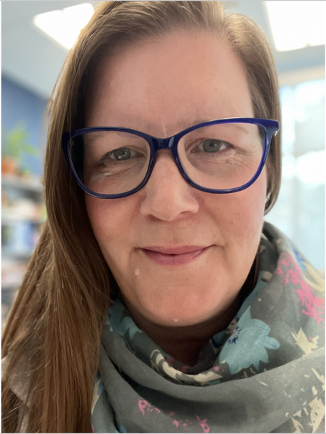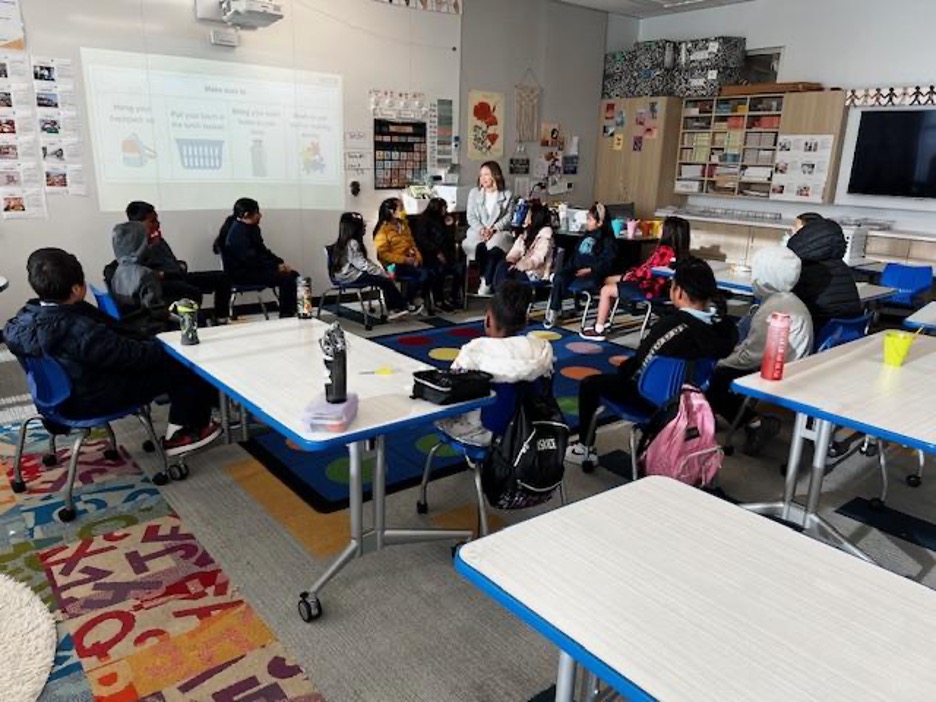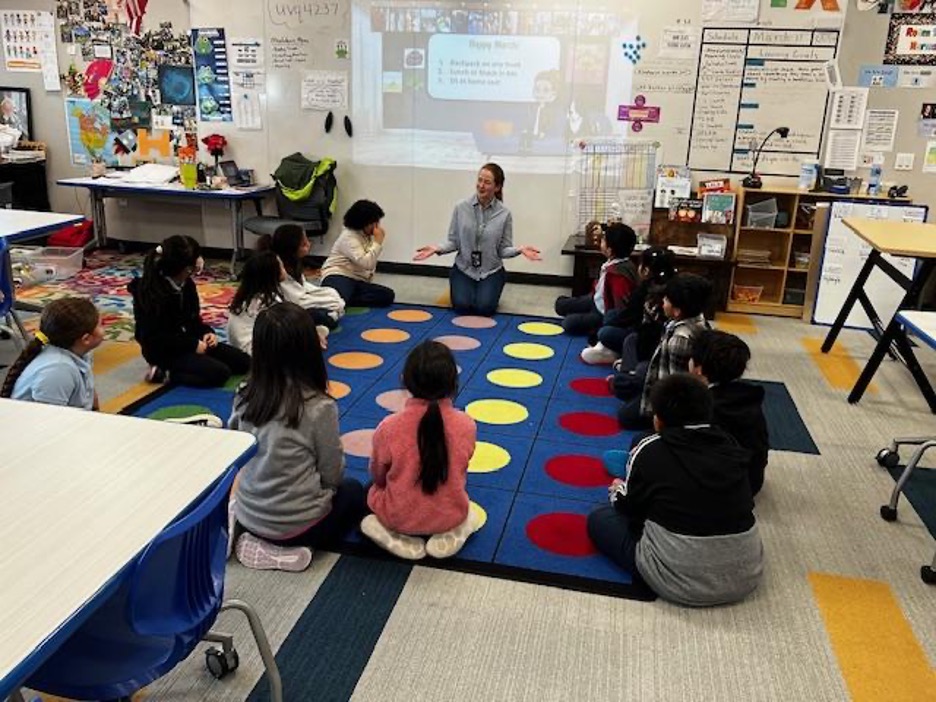
Almost four years ago, the San Mateo County Office of Education in Northern California secured a mental health grant on behalf of twelve of the county’s school districts. With funding from California’s Mental Health Services Oversight and Accountability Commission, the grant addresses student stress and trauma through social-emotional learning and resiliency building programs.
As one of the recipients of this funding, Bayshore Elementary School District has prioritized both the curriculum and professional learning of the Caring School Community program across their K–8 campus. In this interview, Bayshore principal Brandy McDill-Zamarripa shares how Caring School Community is helping educators solve classroom behavior issues without sending students to the office and helping students develop social skills and greater empathy.
Principal McDill-Zamarripa, tell us a little about yourself, the Bayshore Elementary School District, and the students and community you serve.
I began my Bayshore journey in August 2007 after teaching in Camdenton, Missouri for five years. Consequently, this school year marks my 22nd year in education. It is my 17th year at Bayshore and my first year as an administrator. I am very proud of the fact that I have dedicated over 75 percent of my career to the Bayshore Community where I have taught hundreds of students and built lasting relationships with numerous families.
The Bayshore community is a tiny, one-school district in the northern part of San Mateo County, just a literal stone’s throw from San Francisco. Moreover, our district serves a predominantly economically challenged population of approximately 340 students in grades Pre-K through 8.

What is the most rewarding part of being an educator for you? What do you especially enjoy about your current role?
The most rewarding part of being an educator for me is making connections with students and helping them make progress towards or achieve their goals in learning. As an administrator, I really enjoy helping students solve problems and build skills to be able to navigate difficult situations in the future.
As an administrator, I really enjoy helping students solve problems and build skills to be able to navigate difficult situations in the future.
How long has Bayshore been implementing the Caring School Community program? Tell us a little about the implementation.
Bayshore first received Caring School Community materials late in 2020, but the pandemic put a hold on implementation. We engaged in a soft launch of the curriculum during the 2022–23 school year. This school year (2023–2024) teachers were required to utilize the curriculum with integrity.
What was a key planning decision that set you up for success as you launched your implementation?
I think a planning decision that set us up for success this year was providing introductory training to teachers at the start of the school year. As well as having consistent follow-ups with the Collaborative Classroom team.
How has Caring School Community shifted your school’s teaching practices? What results are you seeing from any shifts?

The most obvious shift in teaching practices is that our educators are prioritizing community circles and are holding them on a regular basis.
We have carved out time in the schedule every morning for teachers to hold circles. Teachers are using the time to get to know their classes better, help them solve problems, and celebrate one another.
When something happens that impacts a greater number of students, teachers are having community circles and discussing the impact.
Students are learning to express how they feel about a situation and are being given the space to be heard by their peers.
As a result of these shifts, our teachers are solving most of their behavior issues without administrative assistance. Rather than sending students to the office, they are having conversations with the students about the behavior and its impact on themselves and the rest of the class.
Our teachers are solving most of their behavior issues without administrative assistance.
As principal, what do you appreciate about Caring School Community? What do teachers appreciate about it?
What I appreciate most about Caring School Community is that the curriculum builds empathy in the classroom, promotes important social skills in students (like how to listen to others), and helps them develop problem-solving skills. Our teachers appreciate it for the same reasons!
What has your staff noticed about students’ learning and engagement with Caring School Community?
Here are some observations from the Bayshore team:
- “I’ve noticed an increase in students’ awareness of other people’s well-being. I see students help each other without being asked, and check on students who are feeling sad or left out. Students are realizing that their actions have an impact on others and their own school experience.” —Sarah Gamarra (2nd grade teacher)
- “I appreciate having morning circles AND closing circles. We know more about each others’ lives this year and it creates space for community building every day. I appreciated that the Collaborative Classroom trainers we’ve had were prepared, engaging, and flexible. I think the curriculum provides a great foundation for new teachers to start with. It also highlights the types of conversations we are expecting teachers to have with students and our expectation that students will also be developing their social skills every day at Bayshore.” —Taylor Heinrich Van Gundy (3rd grade teacher)
- “I have noticed students being introspective and seeing situations from others’ points of view.” —Nina Dominguez (7th grade math and science teacher)

How has Caring School Community supported the adult community at Bayshore?
Caring School Community has provided adults with a simple, structured way to make connections with students, gain insight into their lives, and assess their emotional well-being on a daily basis.
What insights would you share with a school that is considering the Caring School Community program?
One valuable insight I have that applies to the implementation of any new curriculum is to make sure to provide training for teachers and staff in the beginning. And as much follow-up support as possible.
Also, when implementing Caring School Community, administrators should participate in as many community circles with the staff and students as they can throughout the year. As a leader, your presence in the classroom shows that you support the implementation and that the social and emotional growth of the staff and students is important to you, too.
Related Reading
Read an interview with another leader whose school is using Caring School Community: Insights from Josefina Ramírez: Creating Inclusive Schools
Learn more about Caring School Community.
